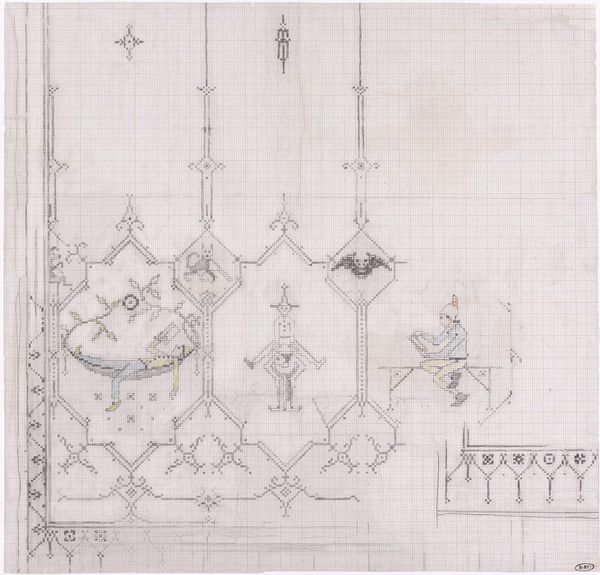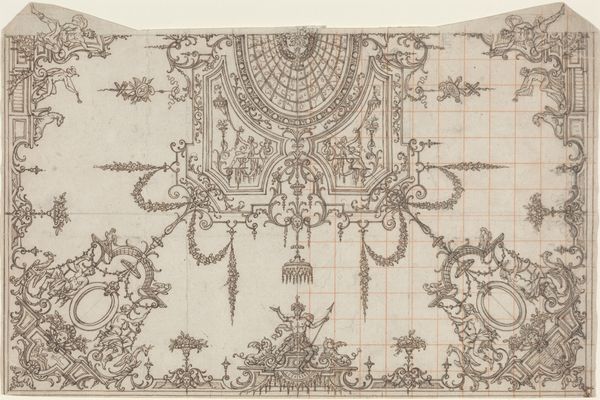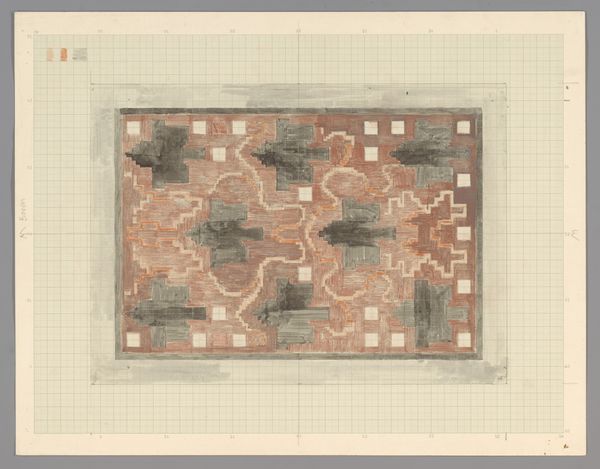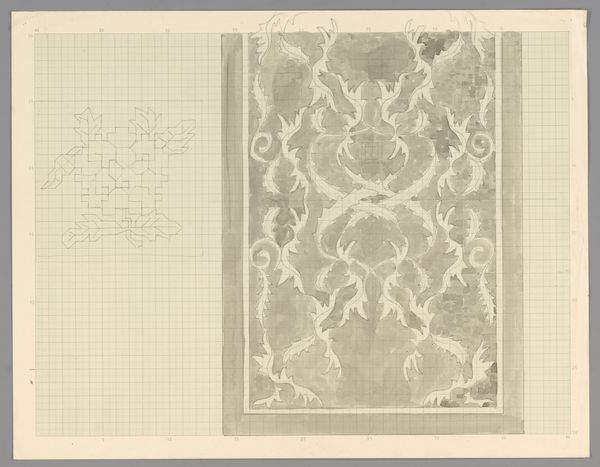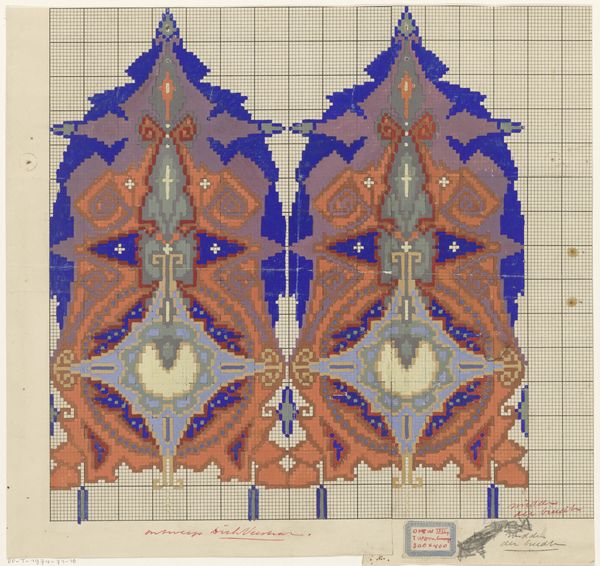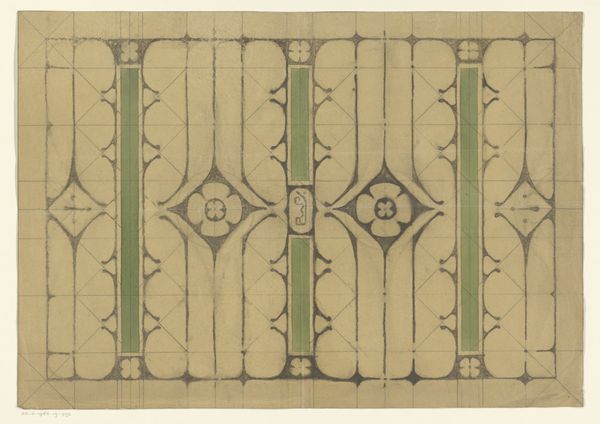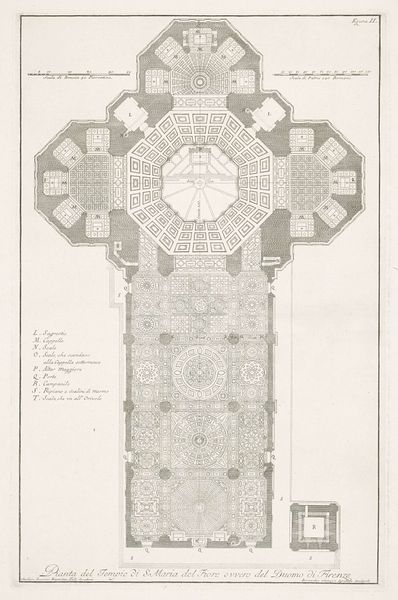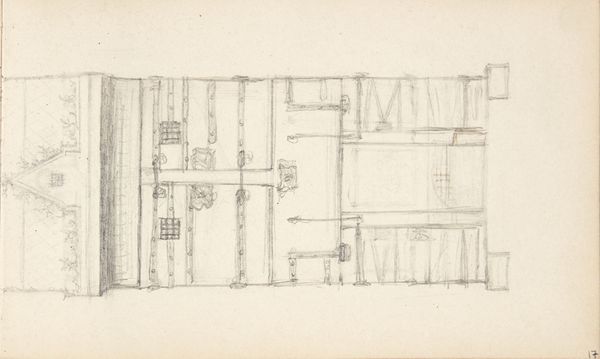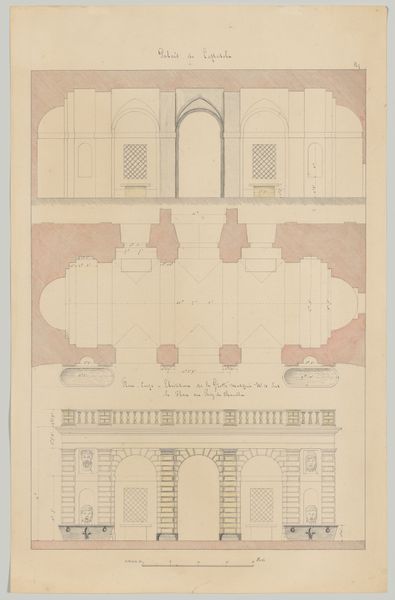
Ontwerp voor decoratief glaspaneel met floraal ornament c. 1874 - 1945
0:00
0:00
careladolphlioncachet
Rijksmuseum
drawing, mixed-media, ornament, paper, pencil
#
architectural sketch
#
drawing
#
aged paper
#
mixed-media
#
ornament
#
art-nouveau
#
homemade paper
#
furniture
#
architectural plan
#
paper
#
geometric
#
fabric design
#
pencil
#
architectural section drawing
#
architectural drawing
#
line
#
architecture drawing
#
architectural proposal
#
decorative-art
#
layered pattern
Dimensions: height 335 mm, width 431 mm
Copyright: Rijks Museum: Open Domain
Curator: This drawing, made circa 1874-1945, is entitled "Ontwerp voor decoratief glaspaneel met floraal ornament", or Design for a Decorative Glass Panel with Floral Ornament, by Carel Adolph Lion Cachet. It’s a mixed-media work on paper currently housed in the Rijksmuseum collection. Editor: My first impression? It feels incredibly intricate and almost soothing, like looking at a carefully planned garden rendered in delicate pencil strokes. There’s an appealing, symmetrical order that seems to define the composition. Curator: Cachet was a significant figure in the Dutch decorative arts scene, and this design illustrates his engagement with the Art Nouveau movement. The museum context in which these drawings were originally archived tells us a lot about art education at the time. Editor: Definitely, and thinking about the societal context, one could analyze how the embrace of floral motifs in Art Nouveau reflects changing attitudes toward nature and industry during the late 19th and early 20th centuries. It might even signal the budding of a conscious response to rampant industrialization. Curator: Indeed. Look closer, and you will see that Cachet’s approach reflects a period where design began being considered holistically, with architectural drawings being carefully linked to broader societal aesthetics. This glass panel's role transcends pure functionality. Editor: Right, because considering it within a feminist theoretical framework, how might the design relate to historical constructions of femininity associated with the natural world? Or what possibilities emerge by centering these architectural designs as forms of gendered labor? Curator: I appreciate that. Examining Cachet’s broader portfolio—tapestries, furniture designs, and graphic work—gives context to the layered pattern in this architectural design. Cachet aimed to unify all aspects of the interior environment. Editor: Precisely. Seeing that the ornamental structures were often displayed at industrial expositions to advocate the benefits of mass productions to the wider public adds an additional layer of context to Cachet's goals. Curator: Seeing Cachet’s artistry, both social awareness and meticulous dedication become all the more evident. Editor: Indeed, viewing his work today, it is clear how his blend of art, design, and commentary continue to spark valuable dialogues.
Comments
No comments
Be the first to comment and join the conversation on the ultimate creative platform.

